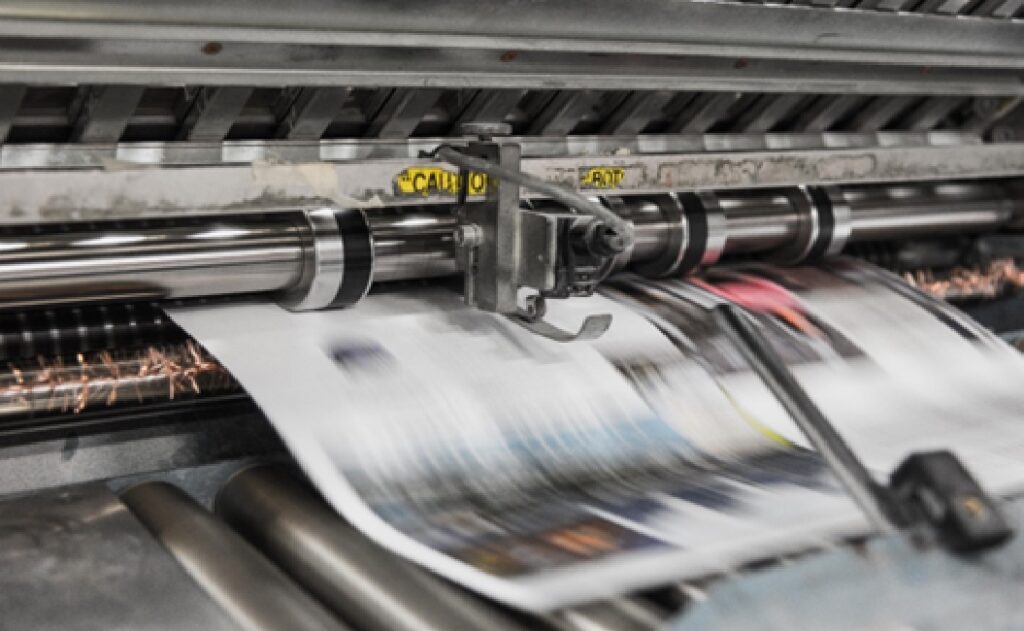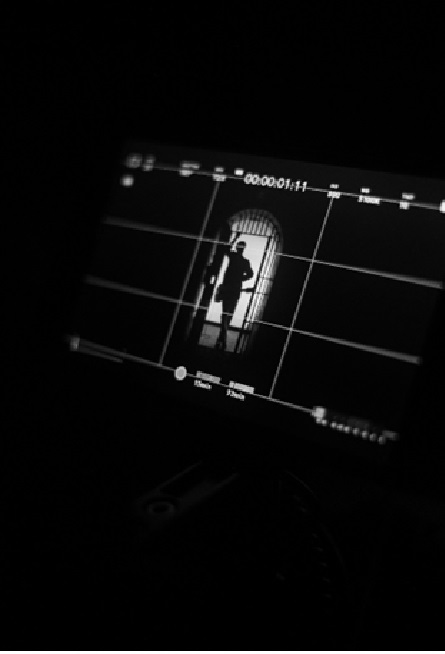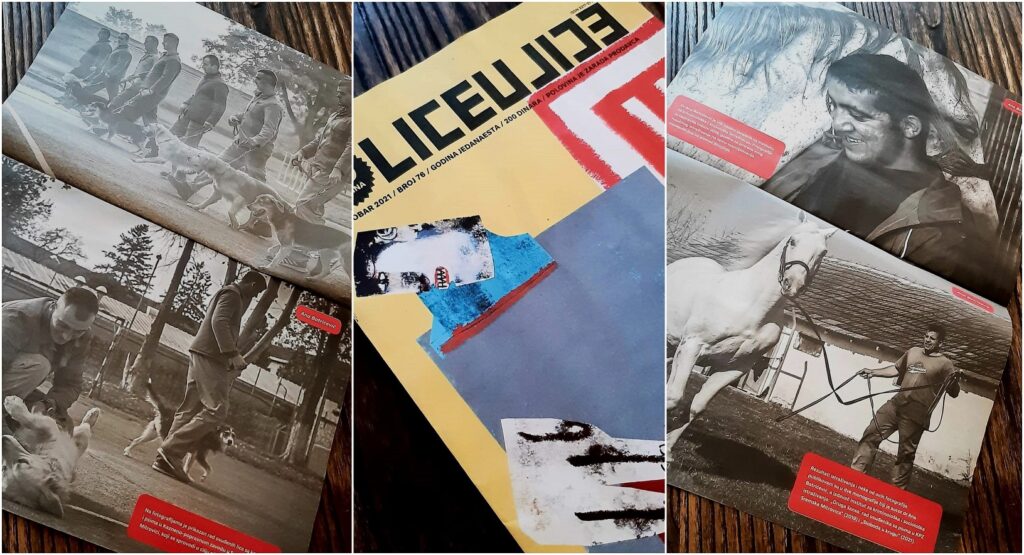The Power of Media in Shaping the Perception of Prison Life
Media has a significant impact on how the public sees and understands prison and life behind bars. Many people use media such as television, movies, newspaper articles, and documentaries as sources of information about what prisons are, who prisoners are, and how the criminal justice system works. In mass media, prisons are often stereotypically depicted as harsh, dangerous, and inhumane places. Movies, TV shows, and other forms of media tend to emphasize dramatic and sensational elements of prison life, highlighting violence, corruption, and conflicts among inmates. However, in reality, the most significant aspects of prison life are strict organization and routines that prisons adhere to for security reasons.

Source
Stereotypical Portrayals of Prisons in Mass Media
When it comes to portraying prisons in the media, the following themes tend to recur:
- Violence and Danger: Prisons are depicted as violent and dangerous places, with conflicts between inmates and prison staff. The prison population is described in a highly negative and demonizing
- Gangs and Organized Groups: The media emphasize the existence of powerful gangs in prisons, portraying them as influential groups that control various aspects of prison life. Conversely, inmates actively working on improving their lives or abstaining from joining gangs or participating in violence are overlooked.
- Poor Conditions: Prisons are often portrayed as overcrowded with degrading living conditions, poor sanitation, and lack of privacy.
- Corruption and Abuse of Power: The focus is sometimes on corrupt prison staff who abuse their power and engage in unethical behaviour, including exploiting and mistreating inmates.
- Escapes and Riots: Dramatic prison escapes and riots are common themes, contributing to a sense of chaos and tension in the prison environment.
- Dehumanization of Inmates: Inmates are sometimes portrayed as one-dimensional characters, which dehumanizes them and further reinforces stereotypes about criminal offenders, including the common emphasis on the failure of rehabilitation efforts in the prison system.
- “Men’s” World: Media often pays more attention to male inmates, emphasizing male dominance, while women’s prisons are often neglected or inaccurately depicted.

Source
Distorted Image: The Case of Martha Stewart and Misconceptions about Female Inmates
An analysis of media coverage of Martha Stewart before, during, and after serving her prison sentence shows how a distorted image of women in prison is created, even when writing about them. Articles like these normalized her prison experience due to the public status she has, leading to the prevailing perception that women convicted of crimes were not adequately punished and that they easily reintegrated into society after release. This skewed perception of the prison system ignores the problems and challenges that women in prison face, especially those from marginalized backgrounds.

Source
Discrepancy Between Media Portrayals and Real Prison Life
In one study, films such as “Chained Heat”, “Red Heat”, “Fugitive Rage”, and “Angels in Chains” were analyzed, along with the author’s personal experience working in a maximum-security prison. The results indicate that cinematic representations of female prisoners portrayed them as being violent, worthless, and unworthy of humane treatment and investment in their rehabilitation or education. Also, popular culture often sexualizes female prisoners and women in conflict with the law.
It’s noteworthy that, although compelling, media portrayals of prisons often do not reflect the reality and complexity of the prison system or the daily lives of inmates. In real life, conditions in prisons can vary significantly, and there are different programs and treatments for inmates. Important issues are often omitted or inadequately addressed, according to testimonies from inmates after their release from several major American prisons, such as poor nutrition and healthcare, limited access to educational and vocational programs, verbal and physical abuse by staff, staff involvement in drug trade within prisons, challenges in finding employment after release, and inadequate training of correctional officers. Interviews revealed specific challenges that female inmates encountered within US prisons, particularly in situations where non-violent prisoners were placed alongside individuals with a background of violent crimes.
Media Influence on Inmates: Reality, Identification, and Disparities in Prison
Media images of prison life significantly influence the perception and experience of inmates about their own experiences in prison. One study even showed that inmates can strongly identify with media portrayals of prison life, even in the most sensational prison stories. Former inmates often accept and use exaggerated depictions from prison films and TV shows, such as those from the series “Oz”, as references when talking about their personal experiences. This trend could be attributed to the building of parasocial relationships between former inmates and characters portrayed in the media. A comparable phenomenon has been observed in other research studies, such as one carried out in a Flanders prison, where inmates’ expectations of prison life were shaped by television narratives about prison.
However, significant differences exist between media portrayals and real life in prison, including conditions, architecture, violence, racial separators, the perception of the role and influence of security personnel, length of sentences, prison escapes, and cell privacy levels. An analysis of “documentary realism” in films like “American History X” and “The Hurricane” shows that it’s challenging to connect widespread depictions of prison with real-life and prison culture. On the other hand, documentary films like “The Farm: Angola, USA” further complicate this issue because they sometimes align with popular perceptions of prison life, making it even more challenging to distinguish between fictional portrayals and prison reality.

Source
Positive Media Depictions: Humanizing Offenders for Better Reintegration
However, a somewhat different impact has been observed. Namely, increasingly frequent media portrayals that show the human side of criminal offenders and encourage empathy can have a positive impact on perception and reduce the negative stigma associated with criminality. Such portrayals could help remove barriers to the successful reintegration of inmates into society after release, particularly concerning housing and employment. The October 2021 issue of the “Liceulice” magazine offers an inspiring example of humanizing (former) prisoners by illuminating their experiences and challenges. Through personal narratives, expert interviews, and artistic initiatives, this issue magazine addressed the stigma associated with incarceration, explored the complexities of social rehabilitation, and highlighted the barriers individuals face upon release. Furthermore, the issue magazine examined various psycho-social and economic factors contributing to incarceration, unveiling gaps in social reintegration mechanisms and the transformative power of art in rehabilitation while emphasizing the need for a paradigm shift in the penal system. These stories humanize ex-convicts, fostering empathy and understanding in society, which is the reason why they represent an example of good practice when it comes to the cooperation between the media, academic and artistic community and penitentiary institutions.

The photographs by Ana Batrićević were published in “Liceulice” magazine in October 2021, which can be purchased at the following link: https://liceulice.org/proizvod/liceulice-76-online-izdanje/
Next, research has shown that TV series such as “Orange is the New Black”, “American Crime Story”, “Mind Hunter”, “Ozark”, “The Wire”, “Prison Break”, and the aforementioned “Oz” can positively influence attitudes toward offenders, showing their human side and the challenges they face, rather than portraying them solely in a negative light.
In the iconic movie “The Shawshank Redemption”, the portrayal of prison life is both compelling and thought-provoking. Director Frank Darabont has masterfully portrayed the harsh realities of incarceration by analyzing the complex dynamics that exist among convicts. The film vividly portrays the rigid prison environment, emphasizing the monotony, brutality, and struggle for survival within its massive walls. Still, the film relies on a narrative of hope, friendship, and the enduring human spirit, showing how individuals can find redemption even in the darkest places. “The Shawshank Redemption” challenges conventional perceptions of prisons and convicts, leaving viewers with a powerful message about the potential for transformation and the resilience of the human soul.
Realistic and Comprehensive Media Depictions of Prison Life for Constructive Discussions and Reforms
In conclusion, the course prisons are presented in mass media deeply affects public perception and attitudes toward the prison system and convicted persons, which has implications for discussions on prison-related public policies. Media portrayals of prison life are often sensational and stereotypical, shifting from reality. This distorted perception can hinder understanding of the actual challenges faced by inmates and contribute to stigmatization, making their reintegration into society after release more difficult. Therefore, the media must provide a more realistic and comprehensive depiction of the prison system and inmates’ experiences. This involves revealing different aspects of prison life and the people involved in it to provide a more objective insight. Through such portrayals, the public can better understand the complexity of the prison system and the issues concerning inmates, leading to more constructive discussions on public policy and necessary reforms.
Milena Milićević i Nikola Drndarević
